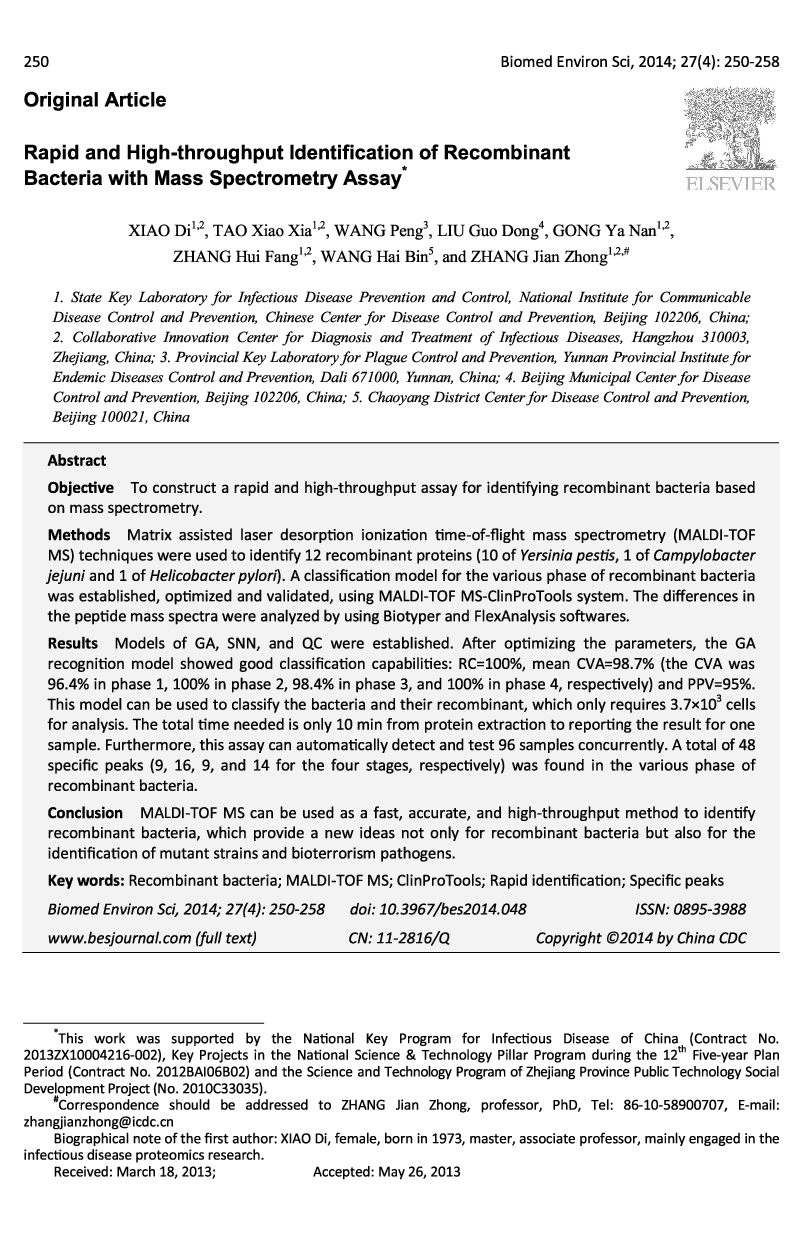| کد مقاله | کد نشریه | سال انتشار | مقاله انگلیسی | نسخه تمام متن |
|---|---|---|---|---|
| 4195814 | 1278639 | 2014 | 9 صفحه PDF | دانلود رایگان |
ObjectiveTo construct a rapid and high-throughput assay for identifying recombinant bacteria based on mass spectrometry.MethodsMatrix assisted laser desorption ionization time-of-flight mass spectrometry (MALDI-TOF MS) techniques were used to identify 12 recombinant proteins (10 of Yersinia pestis, 1 of Campylobacter jejuni and 1 of Helicobacter pylori). A classification model for the various phase of recombinant bacteria was established, optimized and validated, using MALDI-TOF MS-ClinProTools system. The differences in the peptide mass spectra were analyzed by using Biotyper and FlexAnalysis softwares.ResultsModels of GA, SNN, and QC were established. After optimizing the parameters, the GA recognition model showed good classification capabilities: RC=100%, mean CVA=98.7% (the CVA was 96.4% in phase 1, 100% in phase 2, 98.4% in phase 3, and 100% in phase 4, respectively) and PPV=95%. This model can be used to classify the bacteria and their recombinant, which only requires 3.7×103 cells for analysis. The total time needed is only 10 min from protein extraction to reporting the result for one sample. Furthermore, this assay can automatically detect and test 96 samples concurrently. A total of 48 specific peaks (9, 16, 9, and 14 for the four stages, respectively) was found in the various phase of recombinant bacteria.ConclusionsMALDI-TOF MS can be used as a fast, accurate, and high-throughput method to identify recombinant bacteria, which provide a new ideas not only for recombinant bacteria but also for the identification of mutant strains and bioterrorism pathogens.
Journal: Biomedical and Environmental Sciences - Volume 27, Issue 4, April 2014, Pages 250-258
